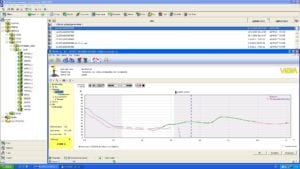
Decades of operation, modernization, and expansion have left many chemical plants a somewhat haphazard mix of different process automation and control systems, remote IO subsystems and field devices from different suppliers. The components may use different communication protocols such as HART, PROFIBUS PA or FOUNDATION Fieldbus. Additionally, ISA100 wireless devices have been applied to add measurements in remote locations and on rotating/moving equipment.

Remote monitoring improves work practices and safety for plant personnel.
Increasingly, FDT® (IEC 62453) technology is being deployed to bring all these protocols together in a single environment, paving the way towards efficient plant asset management and a transition to the Industrial Internet of Things (IIoT).
The use of an innovative open, independent standard such as FDT will help any process control system user operate plants more efficiently and with fewer employees. Reducing employee requirements is important because specialized and experienced instrument technicians and maintenance engineers are increasingly difficult to recruit. There are other areas where major savings can be made; e.g. repair time is saved when maintenance engineers can directly access a device from a PC.
FDT is a central tool for gaining these benefits. It is comprised of two main software components. The FRAME™ application provides a common run-time environment with single-point access to connected devices. It uses a Device Type Manager™ (DTM™), a device driver for an intelligent device or communication component within digital networks. A DTM or collection of DTMs are plugged into an FDT/FRAME™ enabled system – simplifying device integration allowing the cascade of device data to flow freely throughout the architecture with lifecycle management for configuring, operating and maintaining any device throughout the connected plant.

PRM screen – Presentation of Device Patrol warning and opened device-DTM for radar level sensor. The DTM shows the level in the tank, possible false echoes and contamination or damages of the antenna.
Mobility is becoming commonplace as tablets and smart phones are used to view data from different locations. FieldMate, Yokogawa’s device management tool that runs on a tough tablet or notebook pc, gives users a perfect solution for portable device maintenance even in hazardous areas. An important advantage is that its database can be synchronized with PRM, resulting in a single maintenance information database.
In the past, if there was an issue with something like a level measurement in a remote location of the plant, a maintenance engineer had to go out into the field to check the device. FDT-enabled systems like PRM allow maintenance engineers open access to intelligent device DTMs to investigate and troubleshoot problems at any level in the mixed architecture topology. The engineer can immediately tell whether an instrument is incorrectly configured or dirty even though the device is kilometers away.
FDT enables the path to proactive maintenance, removing the inefficiency that comes when preventive maintenance is performed or repairs came after something went wrong. The combination of digital communications, FDT and versatile tools give users central and remote access to all devices in the plant by drilling down through the hierarchy for performance driven data. The PRM Device Patrol function continuously monitors all devices in the plant. The user is immediately alerted when a device status changes. The DTM lets technicians investigate what’s wrong and take appropriate action. A significant improvement in maintenance efficiency is achieved.
Today, FDT is a well-established integration standard, globally adopted with hundreds of thousands of FDT/FRAME-enabled control and asset management systems and tens of millions of FDT/DTM-enabled field devices. For tomorrow’s IIoT and Industrie 4.0 solutions, FDT Group has developed a solution known as “FITS™” (FDT IIoT Server) which continues FDT’s established strategy of providing well-defined interfaces and common components, while also laying the foundation for a modern, integrated automation architecture. Systems like Yokogawa’s PRM that employ the new FITS architecture will protect legacy investments but set the stage for mobility, cloud, and fog enterprise applications.
Learn more by visiting: https://www.yokogawa.com/solutions/products-platforms/solution-based-software/asset-management-software/